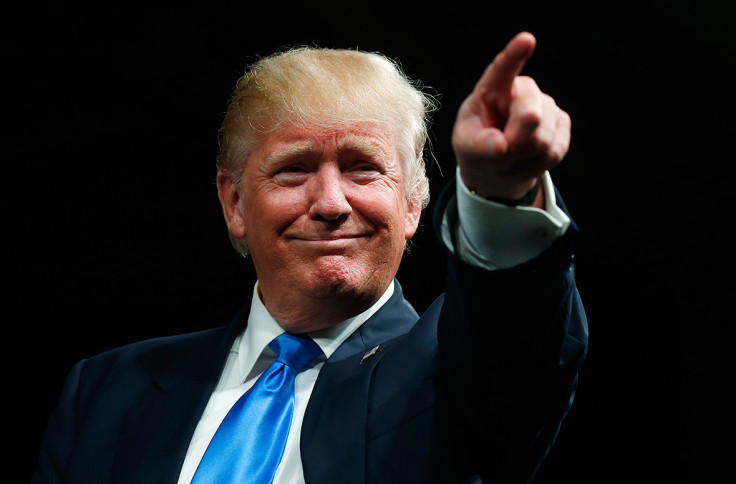If Donald Trump becomes the next US president, America can expect a bull market
He will cut taxes, reduce regulations, unleash America's energy sector, and eliminate America's trade deficit.
On November 10<sup>th, the world may wake up to a jolt of fresh java called the Trump presidency. This would augur the fastest rate of economic growth and most robust bull market since the 1990s.
These predictions follow naturally from even a cursory analysis of Donald Trump's economic plan. He will cut taxes, reduce regulations, unleash America's energy sector, and eliminate America's trade deficit by increasing exports and reducing imports. All of these reforms alone, and working synergistically together, point towards the lodestone of growth – and a new bull market.
Trump's business tax rate reduction from 35% to 15% will let 85% of pretax earnings flow through. This is a 30% improvement from today's 65%. Since few companies grow by 30% on their own, this will be a huge boost for American equities. So will the ability to write off investments in equipment and software.
Trump's across-the-board tax cuts for individuals and tax simplification measures will boost purchasing power and thereby stimulate growth. Such cuts will also create more savings and hence more buying power for equities.
On the regulatory front, the American economy suffers under the weight of a $2tr annual burden – equivalent to a hidden tax of $15,000 per household. Eliminating just 10% of that burden would create $170bn of post-tax earnings. This would boost equity values by as much as $2 tr.
On the energy policy front, Trump's plan to fully unleash America's hydrocarbon potential will not only lower energy costs and thereby make domestic firms more competitive. This added supply to world markets will also benefit global economies by keeping prices $10 or more per-barrel lower than otherwise.
Trump's energy policy would therefore amount to a global saving of $950m per day, of which more than $100m will stimulate the US economy. While Trump's plan to unleash America's oil, natural gas, shale, and clean coal resources may shrink the coffers of oil producing nations, it would certainly help the energy-short economies that constitute much of the rest of the world – and help reduce America's growth-inhibiting and massive trade deficit.
Completely eliminating that trade deficit – a goal of highest priority to the Trump administration – will require sustained and detailed negotiations with the major trading partners that now run large trade surpluses with the US. These partners include principally China, Germany, Japan, Mexico, and South Korea and, to a lesser extent, countries like India and Vietnam.

Trump's elimination of the trade deficit will occur over a few years in relatively small increments from each trading partner. His negotiators' first effort will be to convince each country to divert to the US some of what they already import from elsewhere.
For example, the US has a glut of natural gas and as Trump removes restrictions on its production and export, we will have large amounts to sell to our trading partners. Many now import liquefied natural gas from elsewhere.
Similarly, there are lots of industrial supplies and equipment these same countries buy from other countries but which they could buy from us. Agricultural products are already an export strength of the US, but there is room for market share improvement. The same is true of automobiles and auto parts as well as commercial aircraft.
These negotiations will take time because they will be painstaking – product-by-product and country-by-country. There will be no sudden event where the US slaps tariffs on thousands of items – only a peaceful transition to balanced trade in America and a global economy that distributes savings, investment, and consumption across borders more efficiently and equitably.
Finally, Trump's revenue neutral, private finance-oriented plan to build a trillion dollars of new infrastructure over the next ten years will likewise stimulate growth. Equity investors will be incentivised by tax credits that will be offset by the taxes on the employee wages and company profits of the contractors. This is more good news for contractors and building materials suppliers – at no cost to the US treasury.
As the US economy resumes its strong upward trajectory, it will become a locomotive that helps pull the global economy. As growth replenishes the coffers of a now depleted public treasury, aerospace and defense companies will benefit from the Trump plan to rebuild the US military – and eventually deploy a 350-ship navy, now shrunken by the Obama sequestration and mismanagement of defense policy.
All of these forces will indeed be a jolt of java to the US and world economies. With a Trump presidency, the American economy will reawaken.
Wilbur Ross is a private equity investor. Peter Navarro is a business professor at UC-Irvine. Both are senior policy advisors to the Trump campaign.
© Copyright IBTimes 2025. All rights reserved.






















